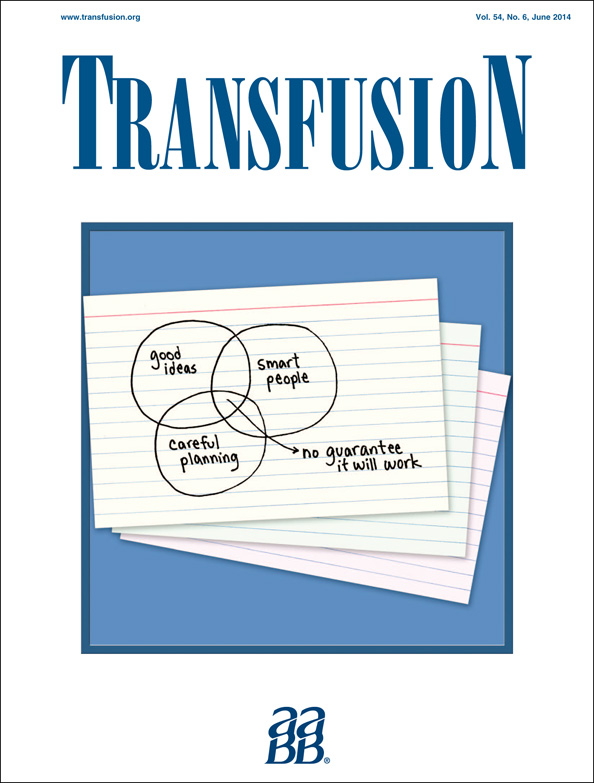In vitro properties of platelets stored in a small container for pediatric transfusion
Abstract
Background
The quality of a platelet (PLT) concentrate (PC) is affected by the number of PLTs in relation to the size and gas permeability of the container. This study evaluates the in vitro function, including hemostatic properties (clot formation and elasticity), of PLTs stored in a container of standard or small size.
Study Design and Methods
PCs with 30% plasma and 70% PLT additive solution were prepared from buffy coats. Two PCs were pooled and divided into the following containers: 1 unit and ½ a unit into a 1.8-L container (reference container) and ½ a unit into a 0.45-L container (test container). In a second set of experiments ¼ of a unit was stored in the reference and test containers. Swirling, PLT count, blood gases, metabolic variables, PLT activation markers, hypotonic shock response (HSR), and coagulation by free oscillation rheometry were analyzed during 7 days of storage.
Results
Swirling was well preserved and pH was acceptable (6.4-7.4) during storage of PLTs in both containers. Glycolysis and PLT activation were higher when storing ½ and ¼ of a unit in the reference container and storage of ¼ of a unit in the reference container resulted in the largest decrease in HSR. The clotting time was similar whereas the clot elasticity was slightly lower for PLTs when stored as ½ and ¼ of a unit in the reference container.
Conclusion
Storage of a low number of PLTs benefits by storage in a small container in terms of better maintained in vitro properties.




